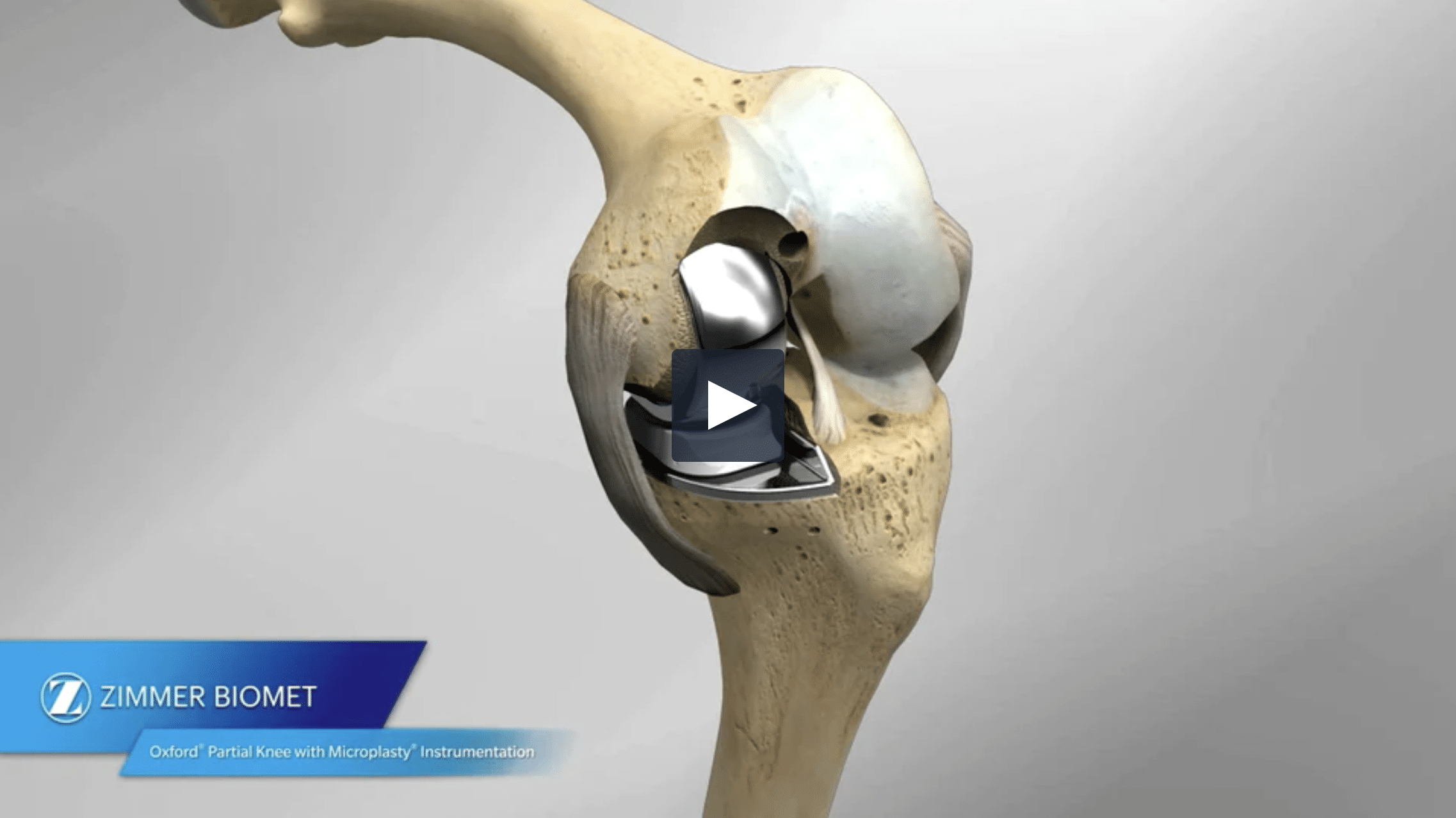The investigators employed a knee extension rig, and a “previously validated method of restrained extension under muscle loading” to measure the extension moment with a repeated measures design1.
16 cadaveric knees were divided into two groups:
- 8 underwent a medial Oxford® PKR, followed by the addition of a Gender Solutions™ Patello-femoral Joint (PFJ). These were then carefully removed, and a NexGen CR was implanted.
- 8 underwent a lateral Oxford Fixed Lateral, followed by the addition of a Gender PFJ. These were then carefully removed, and a NexGen CR was implanted
When compared with the native knee, significant decreases in extensor efficiency were observed following TKR. 1 By comparison, the implantation of medial or lateral PKRs had no impact on extension moment arm or efficiency1. BCR (medial or lateral PKR + patellofemoral replacement) showed a small decline in extensor moment arm between 70 and 90° of flexion (p < 0.05) 1. Within this range of motion, however, this change was perceived to have little impact on extensor efficiency during daily activities1. By contrast, large decreases in extension moment arm were observed at low flexion angles following TKR (p < 0.05). This was associated with significant reductions in extensor efficiency of between 12% and 43% within the daily activity ranges1.
These findings suggest that to achieve the same level of function as PKR or BCR patients, TKR patients must expend significantly more effort/energy, particularly during activities requiring increased levels of quadriceps activity and high cycle numbers, like fast walking1.
Based on these observations, and previous literature indicating that patients with better extensor strength report better outcomes, the authors suggest that: “the conversion of a PKR to BCR in the event of subsequent degeneration may preserve extensor efficiency and potentially improve functional outcomes for the patient1.”



